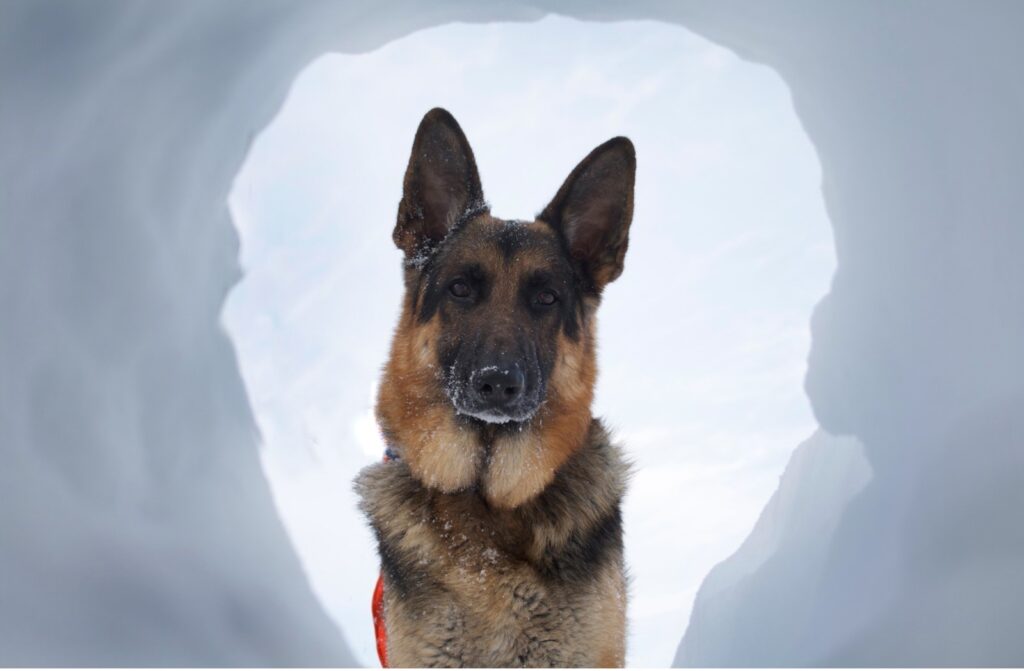How to spot hypothermia in pets

With the frosty season in full swing, PDSA vets have issued advice for all owners on spotting the signs of hypothermia in pets, and what to do should a worst-case scenario happen.
PDSA Vet Nurse Nina Downing explains: “Hypothermia is when a pet’s body temperature drops dangerously low. It can be very serious and, if not treated quickly, it can cause their body to shut down, which is fatal.”
Symptoms of hypothermia:
Shivering – this is a natural response to help the body warm up. However, if they become too cold, they may stop shivering
Drowsiness, confusion, clumsiness
Pale gums
Collapse or loss of consciousness
First-aid for hypothermia:
If they are wet, dry them with a towel
Warm them with blankets underneath and over them
If your pet is awake and able to drink, give them some lukewarm (not hot) water
Slowly increase the temperature around them, but don’t warm them up too quickly, or burn them with anything hot such as a hot water bottle
Call your vet
Nina added: “First aid is vital and can mean the difference between life and death. But even if your pet seems to recover, it’s important to contact your vet and get your pet properly checked over, in case of any long-term damage.”
For more vet-approved information on hypothermia, visit: pdsa.org.uk/hypothermia
Nina continued: “It’s important for pet owners to know the symptoms of hypothermia, and to know what to do if they spot them, but prevention is also key.”
To help pet owners, Nina has put together some easy steps we can take to keep our pets safe during the freezing weather.
Nina’s top tips on keeping our furry friends safe in cold weather:
Make sure your pets have a warm, comfy bed, in a draught free area of the house.
Never leave pets locked outdoors, ensure they can always access shelter and warmth.
If your cat prefers to spend time outside, make sure they can always come inside when they want to. Providing an alternative option, in case cat flaps get frozen shut or blocked by snow, is also a good idea.
Don’t leave pets in cars – the inside temperature can quickly became as cold as the outside, even if you’ve just been driving with the heating on.
If your pet is very young, elderly, underweight or poorly then they are at higher risk of hypothermia. They can’t control their body temperature well so need extra care to keep them warm. High risk pets should only go outside for short times in cold weather, and should be closely supervised. Give them extra bedding and consider getting a pet-safe heat mat.
Don’t forget small furries and bring their hutches inside – a car-free garage or shed with a window is ideal. Give them extra bedding and check their water frequently in case it freezes.
For dogs, it’s important that they still get daily walks for their physical and mental health, even during colder months. But it’s worth taking some extra precautions to keep them safe:
Try to walk dogs in the daylight if possible, as it’s usually warmer and there are fewer hazards. You could take shorter, more frequent walks to avoid them being out for too long.
Some dogs are happier wearing a coat in cold weather – dogs with thin fur especially can benefit from an extra layer of warmth. A well-fitting doggy coat can help them stay warm and dry, just make sure it doesn’t restrict their movement. Watch Nina’s TikTok video on which dogs should wear winter coats https://www.tiktok.com/@teampdsa/video/7322167268748692768
If your dog gets wet, dry them off as soon as possible. If drive your dogs to walks, then keeping a towel in the car is a good idea.
Keep dogs on leads near frozen ponds, lakes and rivers, as falling into icy water can be fatal.
Snow can build up and form clumps on the fur between dogs’ toes, which can be painful. Salt and grit can also irritate their pads, so when they return from winter walks it’s a good idea to wash their paws in warm water. Keep the fur between their toes trimmed short, and you can even use some paw butter or pet-friendly skin cream which may prevent their pads becoming dry and sore.
If during very bad weather your pet prefers to stay cosy indoors temporarily, help them to stay active by providing toys and enrichment activities, so they don’t miss out on vital exercise.




